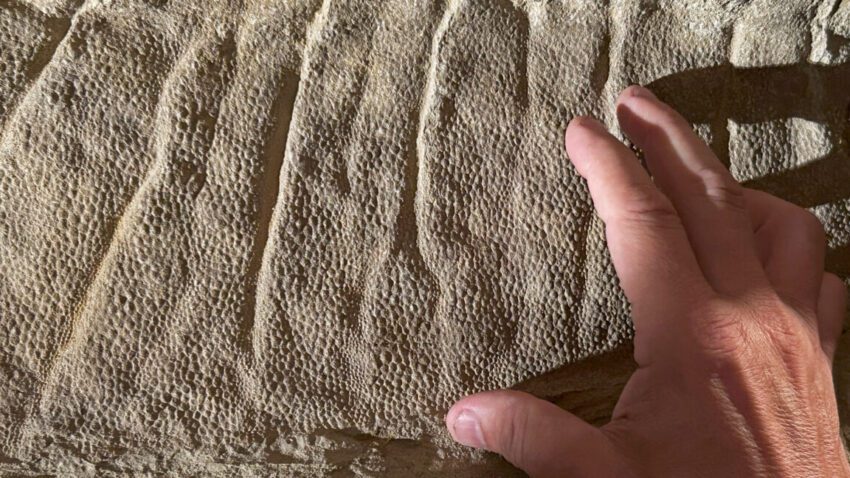
wyoming dinosaur mummies give us a new A recent discovery in Wyoming has provided unprecedented insights into the appearance and anatomy of the duck-billed dinosaur Edmontosaurus annectens, revealing details that challenge long-held assumptions about this prehistoric species.
wyoming dinosaur mummies give us a new
Historical Context of Edmontosaurus annectens
Edmontosaurus annectens, a large herbivorous dinosaur, roamed the Earth during the late Cretaceous period, approximately 73 to 66 million years ago. This species is part of the hadrosaurid family, commonly known as duck-billed dinosaurs due to their distinctive flattened snouts. The first specimen of Edmontosaurus was discovered in 1908 by C.H. Sternberg in east-central Wyoming. This initial find was significant, as it marked the beginning of scientific interest in this particular dinosaur.
The skeleton unearthed by Sternberg was later transported to the American Museum of Natural History in New York, where it became known as the “AMNH mummy.” This specimen was unique because it retained impressions of scaly skin in the surrounding sediment, offering the first glimpse into the dinosaur’s external appearance. However, the understanding of Edmontosaurus has evolved significantly since then, particularly with the advent of new discoveries and technologies.
Recent Discoveries in Wyoming
More than a century after Sternberg’s groundbreaking find, a team of paleontologists led by Paul C. Sereno, a professor of organismal biology at the University of Chicago, returned to the original excavation site. Their mission was to explore the same geological layers that had yielded the first Edmontosaurus specimen. What they discovered was remarkable: two additional mummies of Edmontosaurus, both preserved with detailed impressions of their fleshy external anatomy in a layer of clay less than a millimeter thick.
This new find has provided paleontologists with an unprecedented opportunity to study Edmontosaurus in detail. The impressions captured not only the size of the dinosaur’s scales but also the arrangement of spikes on its tail and other anatomical features that had previously been unknown. The clarity of these impressions has allowed researchers to create a more accurate representation of what Edmontosaurus truly looked like, revealing aspects of its biology that were previously speculative.
Implications of the New Findings
The discoveries made by Sereno and his team have significant implications for our understanding of Edmontosaurus and hadrosaurids in general. For instance, the detailed impressions of skin and scales challenge previous artistic interpretations and scientific assumptions about the dinosaur’s appearance. The findings suggest that Edmontosaurus may have had a more complex integumentary system than previously thought, which could have implications for its behavior, ecology, and evolution.
Revisiting Artistic Representations
Artistic representations of Edmontosaurus have varied widely over the years. The first drawing was created in 1909 by renowned paleoartist Charles R. Knight, who based his visualization on the initial specimen discovered by Sternberg. While Knight’s illustration was groundbreaking for its time, it also contained inaccuracies. For example, he depicted a crest that extended along the entire length of the dinosaur’s body. This artistic choice was influenced by the fact that the original mummy lacked a tail, leading Knight to use his imagination to fill in the gaps.
Sereno notes that Knight’s depiction, while imaginative, did not accurately reflect the anatomical features of Edmontosaurus. The new findings from Sereno’s team provide a clearer picture, allowing for a more scientifically grounded representation of the dinosaur. This evolution in artistic interpretation is crucial for both educational purposes and public understanding of paleontology.
Scientific Methodology and Techniques
The techniques employed by Sereno and his team in their excavation and analysis are noteworthy. The use of advanced imaging technologies, including high-resolution scanning and 3D modeling, has allowed researchers to capture the intricate details of the fossilized impressions. This approach not only enhances the accuracy of reconstructions but also preserves the integrity of the original specimens.
Additionally, the team utilized sedimentological analysis to understand the conditions under which the fossils were preserved. This information is vital for reconstructing the environment in which Edmontosaurus lived, offering insights into its behavior and interactions with other species. By combining traditional paleontological methods with modern technology, the researchers have set a new standard for fossil analysis.
Broader Implications for Paleontology
The discoveries surrounding Edmontosaurus annectens extend beyond the species itself; they have broader implications for the field of paleontology. The ability to obtain such detailed impressions of soft tissues and integumentary structures in fossils opens new avenues for research. It raises questions about the preservation of other dinosaur species and the potential for similar discoveries in different geological contexts.
Moreover, the findings challenge the long-standing notion that dinosaur skin was primarily scaly. The evidence of complex integumentary features in Edmontosaurus suggests that other dinosaurs may have had similar adaptations. This could lead to a reevaluation of the evolutionary pathways of various dinosaur lineages and their ecological roles during the Mesozoic era.
Reactions from the Scientific Community
The paleontological community has reacted positively to the findings presented by Sereno and his team. Many researchers have expressed excitement about the implications of the new discoveries for understanding dinosaur biology. The detailed impressions of Edmontosaurus have sparked discussions about the evolutionary significance of integumentary structures in dinosaurs and their potential functions.
Some paleontologists have emphasized the importance of interdisciplinary collaboration in making such discoveries possible. The integration of geology, biology, and advanced imaging techniques exemplifies how modern paleontology is evolving. This collaborative approach is likely to yield further insights into the lives of dinosaurs and their environments.
Future Directions in Research
As the research on Edmontosaurus continues, several questions remain unanswered. For instance, how did the integumentary features of Edmontosaurus compare to those of other hadrosaurids? What can the findings tell us about the evolutionary pressures that shaped these adaptations? Future studies may focus on comparative analyses with other dinosaur species to address these questions.
Additionally, ongoing excavations in Wyoming and other regions may yield more specimens that could further illuminate the biology of Edmontosaurus and its relatives. The potential for discovering additional mummies or well-preserved fossils remains high, and each new find has the potential to reshape our understanding of dinosaur evolution.
Conclusion
The recent discoveries of Edmontosaurus mummies in Wyoming represent a significant advancement in our understanding of this duck-billed dinosaur. The detailed impressions of its external anatomy provide a clearer picture of what Edmontosaurus looked like and challenge previous assumptions about its appearance. As research continues, the implications of these findings will likely extend beyond Edmontosaurus, influencing the broader field of paleontology and our understanding of dinosaur biology.
Source: Original report
Was this helpful?
Last Modified: November 16, 2025 at 4:36 am
3 views















